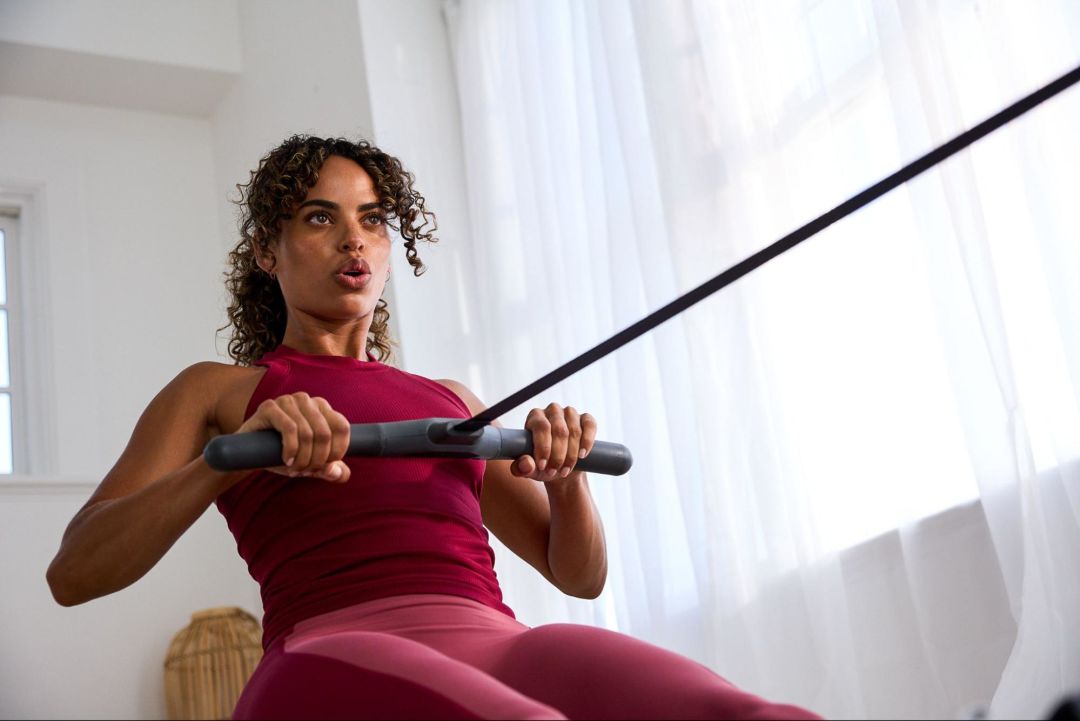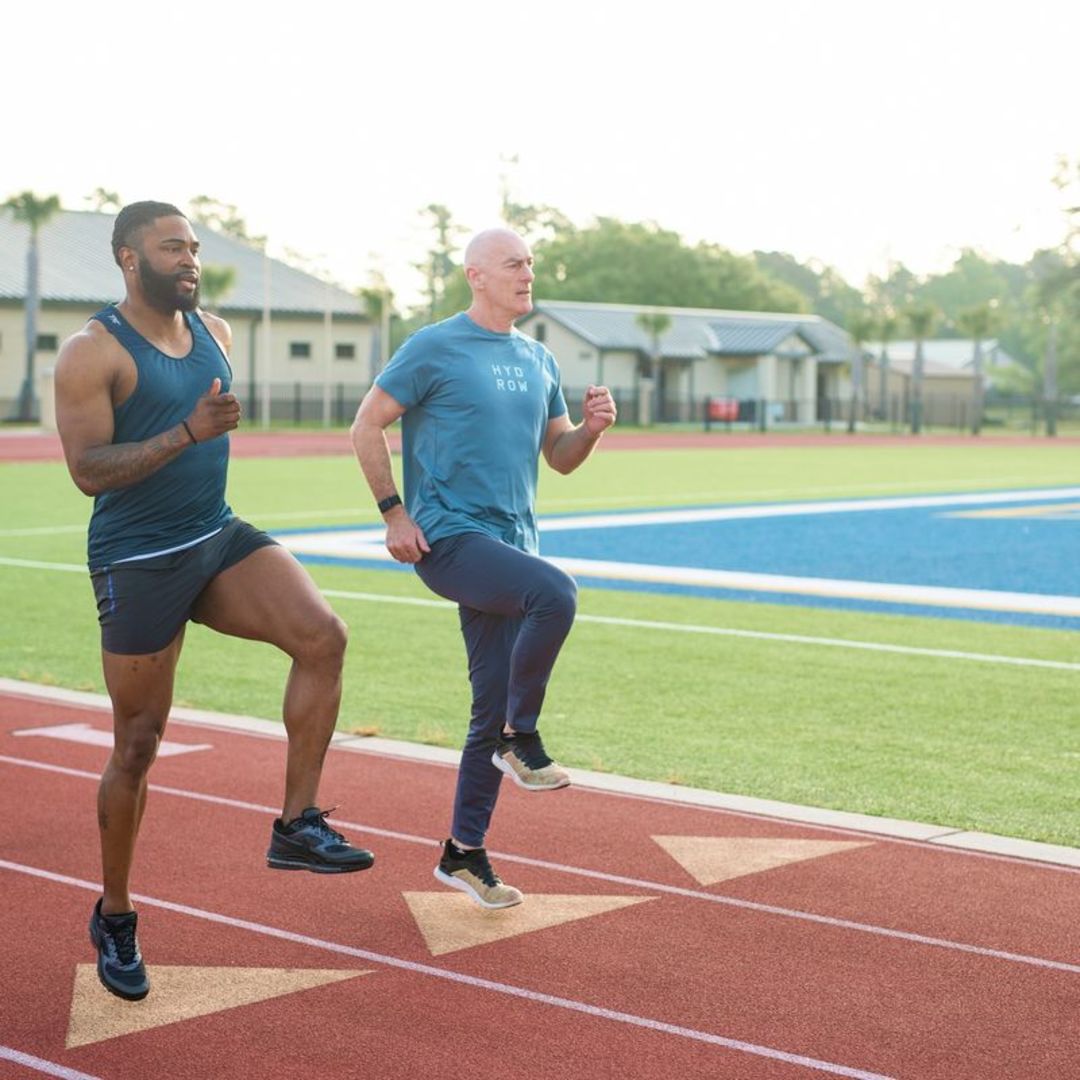Is It Okay to Exercise With Sore Muscles?

It’s happened to all of us: You overdo it working out, or try something new, and the next thing you know, you're sore all over and can barely walk down the stairs. You wonder if you’ll get through your next workout—or if you even should.
Is it okay to work out with sore muscles, or should you take the day off? It’s important to find a good balance between knowing when your body needs rest and recovery, and pushing yourself a bit. There are pros and cons to exercising when your muscles are sore, and we’ll address both so you can make the best decision for yourself.
This blog will explore:
Let’s dive in!
What causes muscle soreness?
Lactic acid buildup is often thought to be the cause of sore muscles. We’ve all heard that, right? But that’s simply not the case. Lactic acid does build up during strenuous workouts, but it generally clears out within an hour.
So, what does cause muscle soreness?
Muscles usually get sore because of microtears during exercise, and the subsequent inflammatory response to those microtears. Soreness can take anywhere from six to 12 hours to show up, and last a few hours to a few days (which is why it’s referred to as Delayed Onset Muscle Soreness, or DOMS).
However, soreness doesn’t necessarily equal an effective workout, and lack of soreness doesn’t mean the workout was a waste of time. Everyone reacts to exercise differently, and being sore or not shouldn’t be your measure of workout success.
All exercisers can get sore after a workout, regardless of age or fitness level. Usually, soreness occurs because you do a familiar exercise you haven’t done in a very long time, or you do a new exercise and underestimate your starting intensity level. And, if you’ve never exercised before, it’s completely normal to have some soreness when you first start.
Related blog: How to Relieve Muscle Soreness After a Workout
What to consider when deciding whether you should exercise with sore muscles
As a general rule, if your soreness is uncomfortable but not bad enough to prevent you from normal daily functions, it’s probably okay to exercise. Whether or not you do exercise when you’re still sore is largely up to you and how you feel, but there are a few factors to consider:
Severity of soreness
Type of soreness
Affected muscles
Rest and recovery schedule
1. Severity of soreness
The severity of your soreness is based on your own scale of what you can tolerate. If you’re feeling so sore it’s impairing your natural movement or range of motion, or the idea of lifting a weight or trying to move quickly fills you with dread, it might be a good day to just skip the workout. Also, if your muscles are tender to the touch, take some rest.
2. Type of soreness
The type of soreness you’re feeling is another thing to consider. If the achiness shows up a day or so after your workout, it’s likely DOMS and you can probably still exercise with less intensity.
If you feel sudden muscle soreness or pain during a workout, or it’s localized to one spot, it may be injury-related, which requires treatment and rest.
3. Affected muscles
Sometimes you can work around soreness if it's just certain muscle groups. If you’re reeling from a tough leg day, you can still do an upper-body workout. Or, if your calves are sore from hill sprints, low-impact exercise, like a rowing workout, is a good choice.
4. Rest and recovery schedule
Factoring in when your last good rest day was can help you decide whether you should work out. If you’ve been going full steam ahead with no rest, then your sore muscles might be trying to tell you something. Take the day off!

Efficiency for the win.
Work 86% of your muscles in just 20 minutes of rowing with Hydrow.
The benefits of exercising with sore muscles
It might seem counterintuitive, but there are benefits to exercising even if you're sore from a previous workout. According to a study review in Frontiers in Physiology, active recovery, or light exercise after a strenuous workout, has been shown to reduce the feeling of DOMS. Additional benefits of exercising with sore muscles include:
Increased blood flow
Reduced stiffness
Maintained momentum
Establishing limits
1. Increased blood flow
Any exercise increases blood flow to working muscles, whether you're sore or not. Better blood flow improves circulation, which oxygenates muscles and helps carry away waste products. This speeds up recovery and helps you feel less sore the next time you do a workout.
2. Reduced stiffness
Active recovery can gently increase your range of motion and mobility, which can alleviate muscle stiffness. Taking time to warm up and move thoroughly, rather than avoiding movement, can help you loosen up.
3. Maintained momentum
Being overly stiff and sore after a workout makes recovery longer and takes you longer to get back to exercise. Then, the cycle starts all over again. If you’re not painfully sore, some movement will help you recover, feel better, and stay on track with your routine.

What’s your workout style?
Take our quiz and get a customized 14-day training program.
4. Established limits
Exercising while sore helps you learn your limits and learn to read your body. Did you push too far? Did you try something new too soon? Being more in tune with your body and how it feels to work hard can help motivate you to keep going.
The drawbacks of exercising with sore muscles
As already mentioned, exercising when sore is largely a personal choice, and there definitely are some downsides to consider. The following drawbacks are all connected, so it’s important to think about them as a group.
Injury risk
More soreness
Impaired performance
Overtraining
Increased fatigue
1. Injury risk
Working out when you're very sore can impair normal movement, increasing your risk of injuring yourself or overstressing your joints and muscles. A good rule of thumb is if you can’t move with a full range of motion, you may need some time off.
2. More soreness
Exercising too hard when you’re already sore can just exacerbate your soreness. This can also lead to other things, like injury, poor performance, and overtraining.
3. Impaired performance
Speaking of performance, sore muscles won’t function optimally. If your muscles can’t contract and move normally, you won’t get the most out of your workout. Usually, some exercise is better than no exercise, but if you can’t perform it correctly, it may not be worth it.
4. Overtraining risk
Always pushing through when you’re sore may lead to overtraining, burnout, and lack of enjoyment with exercise. The occasional workout when you’re sore is fine, but if you’re always sore, you may need some extended rest or a change to your routine.
5. Increased fatigue
Exercising when you're already achy and tired will only tire you out more. This leads to increased injury risk, impaired performance, and more soreness, creating a vicious cycle that will make it even harder for you to recover.
Tips for for exercising with sore muscles
If you decide exercising while you’re still sore is okay for you, there are a few things to keep in mind that can help you reduce the risk of downsides:
Warm-ups and cool-downs
Low-intensity activities
Hydration and nutrition
Listening to your body
Recovery activities
1. Warm-ups and cool-downs
Proper warm-ups and cool-downs are always a good idea, but they’re particularly important if you’re still sore. Performing a longer warm-up gives your body time to adjust to movement and loosen up your joints.
2. Low-intensity activities
Stay moving without overtaxing your body by lowering the intensity level of your exercise or doing a low-impact exercise like rowing or cycling. Working different muscles than the ones that are sore can also help you maintain your momentum.
3. Hydration and nutrition
Staying properly hydrated and fueled always helps with your fitness goals. But when you’re sore, making sure you’re hydrated and fueled with healthy food can help you feel fresher faster and keep you going.
4. Listening to your body
Possibly one of the most important tips is to simply listen to your body. Learn what it feels like to work out strenuously and what your body needs for recovery.
5. Recovery activities
Incorporating things like foam rolling, or ice and heat, can help you feel better faster. Making it a regular part of your routine can support your progress and goals.
Exercising with sore muscles: The bottom line
The decision to exercise when you’re sore is solely up to you after considering all these factors. The most important thing is to tune in to your body and to be kind to yourself. Give yourself grace to work through it without causing injury, more soreness, or delaying getting back on track.

Real strength keeps moving
Learn how working out with Hydrow can help support a fuller, more active life.






